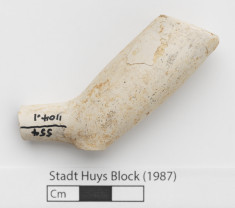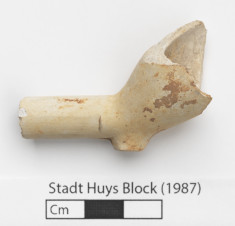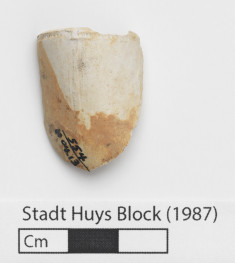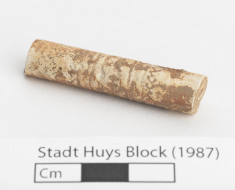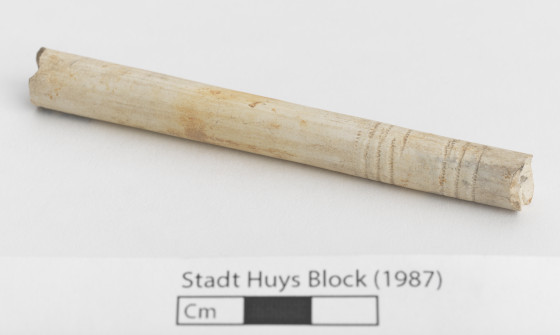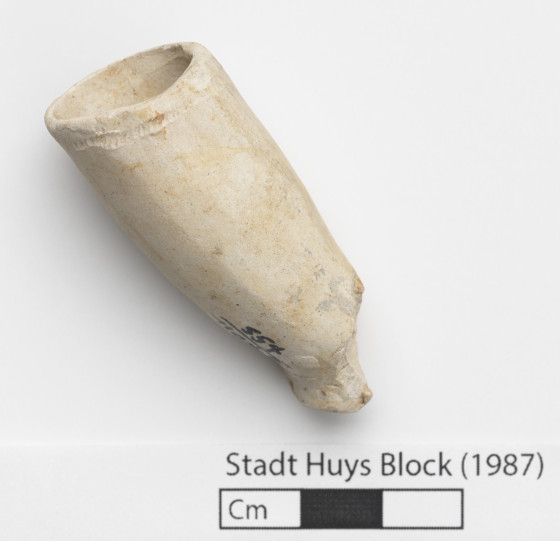Introduction: Lots 8, 9, and 15 are modern designations for adjacent parcels of land that were owned together and used as a single property until the early 1830's. Excavations produced important discoveries like that of the Colonial-era Lovelace Tavern, proving that significant archaeological resources could still exist in urban spaces. Project archaeologists were able to lobby for increased time and funds to continue their work on the strength of these finds, leading to additional discoveries. In all, the project provided considerable information about the history of New York City and its inhabitants from the 17th to the 20th centuries.
The tavern was constructed by the second English Governor of New York, Francis Lovelace, around 1670. Taverns were important spaces for colonial communities, serving as centralized meeting places that fulfilled important social, recreational, political, and economic functions. Lovelace Tavern became New York's temporary City Hall starting in the late-17th century after the Stadt Huys fell into disrepair and was demolished in 1706.
Rationale: Remains of the Lovelace Tavern were first encountered during the excavation of Test Cut AQ. Test Cut BE was a 3- by 3-foot excavation unit placed directly east of the stone boundary wall separating Lots 8 and 9. Though relatively shallow, two Lovelace Tavern deposits were found in this test cut. Overall, archaeologists excavated 27 test cuts inside, adjacent to, or within the walls of the tavern, representing around fifty-percent of the total area.
Results: Test Cut BE included two intact Lovelace Tavern deposits of different soil colors, reddish-brown to the east and grey to the west. It has not yet been determined why these layers are different or how they were created, but both have been directly tied to the tavern based on their artifact content and stratigraphy. This layer was present in the western half of the test cut and extended between 7- and 12-inches below excavation surface. Numerous smoking pipe fragments and other diagnostic artifacts dating to the 17th century were recovered.
Lot 9, Test Cut BE, Stratum III, Level A
-
Collection method
Shovel, Trowel, Screen (1/4-inch mesh).
-
Soil description
Gray-Green
-
Munsell
5Y 6/2, 5Y 6/1


